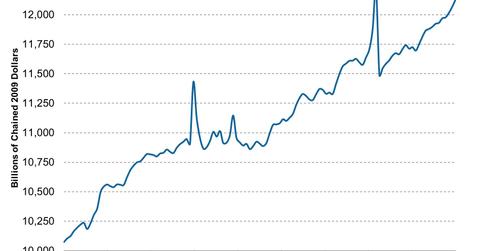Disposable income increases, drives demand for leisure
Real disposable income increased 3.7% year-over-year. This boosts consumer buying power and means consumer spending in leisure activities may increase.
March 5 2015, Updated 9:06 p.m. ET

What’s disposable income?
Disposable income is the amount of money households have available for spending as well as for saving. Disposable income is the personal income left after income taxes. Real disposable income is disposable income available to households after an adjustment has been made for price changes.
Disposable income affects casinos
The U.S. Bureau of Economic Analysis releases monthly disposable income data. Real disposable income increased by 0.5% in December 2014 month-over-month. On a year-over-year basis, real disposable income increased 3.7%.
An increase in disposable income boosts consumer buying power and increases the probability of consumer spending in leisure activities. Buying power increases with an increase in income but depends on the rate of inflation.
If income rises faster than prices increase, buying power will always increase. How consumers perceive their level of buying power is an important factor to consider. Perceptions about buying power are reflected in the Consumer Confidence Index, which we’ll discuss in the next part.
Personal disposable incomes have been rising since January 2013. This could possibly mean that consumers have more buying power, which is positive for casino companies, including Las Vegas Sands (LVS), MGM Resorts (MGM), Wynn Resorts (WYNN), and Penn National Gaming (PENN).
The VanEck Vectors Gaming ETF (BJK) has the largest exposure of ~8% and 7% to LVS and WYNN, respectively. The Consumer Discretionary Select Sector SPDR Fund (XLY) helps investors gain access to the leisure industry.
